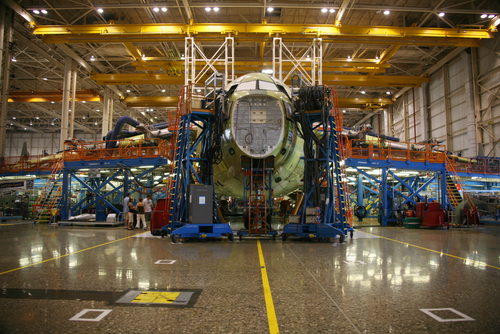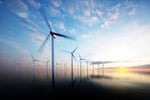Less is more....but more is more too. The Capital Goods Sector in India
“Sorry I wrote such a long letter: I didn’t have time to write a short one”.
It’s a principle Prime Minister Modi seemed to have taken to heart when he launched the Make in India Campaign in 2014: summing up the expected scope and likely impact of this hugely significant programme in just five small words: “zero defect and zero effect”.
He meant, of course, that Indian manufacturers of capital goods should aspire to produce with little or no (preferably zero) defects, goods that would not be rejected when sold around the world; and produce them too in a way which would have as close to zero an impact on the environment as possible.
It’s a snappy piece of polemic, but how has the Campaign been doing over the last two and a half years? How closely does the reality match the rhetoric?
Well, you have to say that the first of Prime Minister Modi’s zeros has been doing pretty well. India has enhanced and entrenched its reputation for high-quality production. Take, for example, the announcement by Boeing in October last year that it was planning to assemble Chinook or Apache Defence Helicopters on the subcontinent. Those aren’t your common or garden capital goods: with a genuine zero tolerance for faults, it says a lot for its improved reputation for quality that Boeing should plan to set up such a high-grade manufacturing facility in India; and where Boeing lead, Fiat (the Chrysler Jeep), Hiatchi (a major new auto component plant in Chennai) and Airbus (an extensive components supply network) have each announced plans to follow.
All of which makes this week’s Report by the highly influential Management Consultants, McKinsey (Seizing India’s Capital Goods Opportunity) both topical and informative.
McKinsey point out in their Report that demand for capital goods in India has more than doubled over the past decade; a rate of growth which has been turbocharged by India’s new status as the world’s fastest growing large economy, and as the Report also points out, one third of this demand has traditionally been met by imports. India imported a staggering $30 Billion worth of capital goods in 2015 alone.
Despite recent initiatives, the capital goods sector on the subcontinent still remains largely underdeveloped (bear in mind, for example, that the economy overall is worth $2 Trillion a year with capital goods accounting for a mere 0.06% of GDP); which leads McKinsey to conclude (perhaps predictably) that the sector, historically “weighed down with low investment in technology and talent”, is now creating significant opportunities for growth.
Production of (high quality) capital goods is obviously a crucial part of the Make in India Campaign as well. With the stimulus the Campaign is giving to the sector, McKinsey estimate that India is likely to see an 8-10 percent growth in the production of capital goods; compared with 2-4 percent in non- growth markets.
Added to that again, and as we have pointed out on this site on a number of occasions over recent months, higher spending on infrastructure is also now a Government priority in India, particularly spending on rail and roads (with more than 20 kilometres of new roads having been completed every day in India over the past decade). Spending on rail infrastructure to is expected to double to more than $15 Billion a year by 2020 and India is set to double its Port capacity over the next decade as well.
Bearing all that in mind, few if any will be betting against McKinsey’s predictions.
But what about the second of Prime Minister Modi’s zero’s; what about the environmental impact of all this growth?
Well, McKinsey predicts serious prospects for growth in capital spending on that front as well.
They point out (rightly) that deteriorating air quality has forced India’s policy makers over recent years to tighten emissions laws and “these new measures could stimulate a wave of expenditure in cleantech”. They estimate that thermal power plants will need to spend roughly $15 Billion on emission control equipment over the next five to seven years and management of industrial water will require output water treatment, recycling and re-use systems: Government has already committed to spending $3 Billion on the clean up the Ganga programme alone. And, of course, each of these developments is likely to generate an exponential growth in infrastructure for wind energy production as well.
It looks like interesting times ahead. More is more, as you might say….
Red Ribbon CEO, Suchit Punnose said:
I have been following the “Make in India” Campaign with great interest since it was launched by Prime Minister Modi in 2014. As a mainstream impact investment company, Red Ribbon is particularly interested in the environmental possibilities and consequences of its investments, so the second of Prime Minister Modi’s “zeros” has been of especial interest to us here.
I couldn’t agree more with the conclusions reached in this month’s McKinsey Report. Given its increased reputation for quality and a highly skilled, technologically skilled workforce, India is becoming a “hub” for a production of capital goods globally. However, that shouldn’t come at an environmentally unacceptable cost, so I was pleased to note their conclusions too on likely levels of spending on environmental projects on the subcontinent by the end of 2020.
Despite being one the fastest growing major economies, India still houses a third of the world’s extreme poor with the highest demographics of children suffering from malnutrition. With 1.2 billion people, India accounts for around 18 percent of the world population and is ranked third in global carbon emissions. Any positive or negative change in the country’s development path could have a tremendous impact both at a social and an environmental level globally.
Building resilience in the economy will entail deep-rooted systemic challenges relating to governmental support, tax structures, profitability, education, technical skills and financial barriers, among others. To achieve this policy must include all sectors of the economy. Micro, Small and Medium-sized Enterprises (MSME) form the backbone of the national economic structure, from family run shops to small factories. The capacity of the MSME sector to drive change in India through economic growth and development is generally underestimated, but with a wide range of services and manufactured products ranging from traditional to hi-tech items, the sector is very dynamic.
If the conclusions suggested in the McKinsey report are realised, and I believe they will, then we need to foster an approach aimed at decoupling economic growth from environmental impact. To achieve this at scale, development policies must place much more emphasis on harnessing the potential of business models which promote waste reduction and pollution avoidance. Here to the investment industry has an important role to play and the starting point is to recognise that “the transition to a more resilient economy must inevitably be led by well-governed business striving to reduce the environmental impact of creating value for society”. As mainstream Impact Investors, this is the underlying principle driving our investment decisions.
Reference: McKinsey et al, Seizing-Indias-capital-goods-opportunity, Health Care Systems & Services, 2017








Leave a Reply